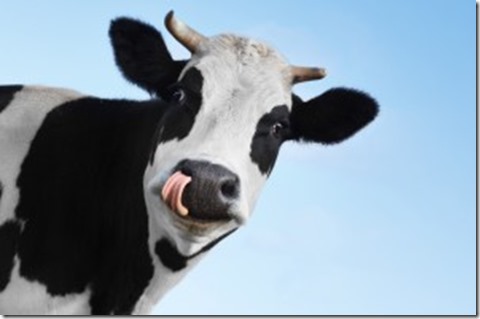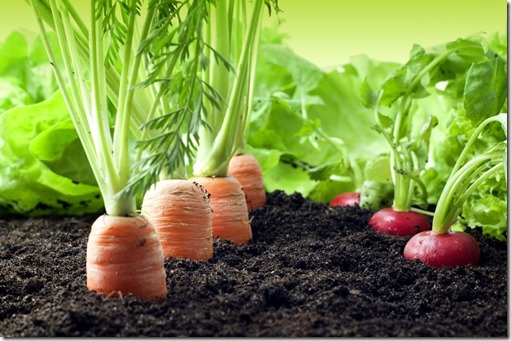 We have recently proclaimed: “All that YHVH has spoken; we will do, and we will be obedient.” This urges us to an investigation of our lives. Are we doing all that YHVH has spoken and are we obedient? One issue, of many, YHVH led me to look into, is mixing. The prohibition to mix certain things is something that is often overlooked and seems quite unimportant. So why would we want to spend any time investigating this? Y’shua gave us the answer:
We have recently proclaimed: “All that YHVH has spoken; we will do, and we will be obedient.” This urges us to an investigation of our lives. Are we doing all that YHVH has spoken and are we obedient? One issue, of many, YHVH led me to look into, is mixing. The prohibition to mix certain things is something that is often overlooked and seems quite unimportant. So why would we want to spend any time investigating this? Y’shua gave us the answer:
Luke 16:10
10 “He who is faithful in a very little thing is faithful also in much; and he who is unrighteous in a very little thing is unrighteous also in much.
We, for the most part, do not wear clothing made of mixed thread. You probably noticed that I said, for the most part. Some clothing items are difficult, if not impossible, to find without mixed materials. What are we to do in these cases? Have you not also wondered if this is indeed the correct interpretation of these verses? Could it perhaps have more of a spiritual than a literal interpretation? We will endeavour to find answers for these questions…
The prohibited mixtures
The commandments in Scripture regarding prohibited mixtures are about mixing cattle, mixing seed and wearing garments made of two kinds of material. Israel is furthermore forbidden to intermarry with the nations. That too is mixing. We have written a previous article about mixed worship ” How mixed worship will lead to your deception” Just click on the hyperlink if you would like to read it.
So, how are we to keep these commandments and why is this significant? We will commence by looking at the meaning of the word “mix.” This quote is from the Merriam- Webster Dictionary. To mix is:
- to combine or blend into one mass or to combine with another
- to bring into close association 〈mix business with pleasure〉
- to form by mixing components 〈mix a drink at the bar〉
- to produce (a sound recording) by electronically combining or adjusting sounds from more than one source
- CONFUSE — often used with up 〈mixes things up in his eagerness to speak out —Irving Howe〉 verb intransitive
- to become mixed or to be capable of mixing
- to enter into relations : ASSOCIATE
- CROSSBREED
- to become involved : PARTICIPATE 〈decided not to mix in politics〉 — mix•able \ˈmik-sə-bəl\ adjective —mix it up: to engage in a fight, contest, or dispute1
Keep this in mind as we study the scriptures about mixing. There are two main scriptures that deal with mixing: Leviticus 19:19 and Deut 22:9-11 (excluding the Scriptures prohibiting mixing with the nations. We shall get to those later.) How are we to, firstly, apply this in our lives and secondly, to understand this? Understanding the commandments should not be our priority before we obey, we are to obey first and then understanding may come later, though not always. Some commandments are just impossible to understand, but we should keep them regardless. Maybe one of the reasons this verse starts with “You are to keep My statutes…”
Leviticus 19:19
19 ‘You are to keep My statutes. You shall not breed together two kinds of your cattle; you shall not sow your field with two kinds of seed, nor wear a garment upon you of two kinds of material mixed together.
In this passage, we are given three instructions.
- First concerning the breeding together of cattle, it is prohibited.
- Then, about the sowing of our field; neither shall we sow our field with two kinds of seed and
- lastly, are we not to wear a garment of two kinds of material mixed together.
The phrase “Two kinds“ used with seed and material is translated from “kilayim” which means as translated, two things of different kinds. Both seed and material is not in the original text, but rightly deduced from the context.
3977 כִּלְ×Ö·×™Ö´× (kil·ʾǎ·yim): n.[masc.] dual; ≡ Str 3610; TWOT 980d—LN 63.9–63.12 two things of differing kinds (Lev 19:19; Dt 22:9+)2
It is important to note that when mixing takes place, the product becomes indistinguishable from the parts used to create it. Keep this in mind as you continue to read.
Note that in the process of mixing, the various substances become a single mass, and the constituent parts are indistinguishable.3
As noted before, this passage begins with: “You are to keep My statutes” and ends after verse 37 with the same words. Could there be a special significance to these statutes, something that binds them together? It is quite possible, but not our focus. If you know the answer, will you please share with us?
This passage prohibiting mixing is repeated in Deuteronomy.
Deuteronomy 22:9–11
9 “You shall not sow your vineyard with two kinds of seed, or all the produce of the seed which you have sown and the increase of the vineyard will become defiled. 10 “You shall not plow with an ox and a donkey together. 11 “You shall not wear a material mixed of wool and linen together.
What do we have here?
- We are not to sow a vineyard with two kinds of seed as it will cause defilement of the produce.
- we are not to plow with an ox and a donkey together and
- we are not to wear material of wool and linen together.
How are we to understand this? Once again; do we need to understand this? We do not need a reason; however, we can contemplate, but we need to know how to apply this commandment in our lives. These are the same three categories we found in Lev 19:19, this time slightly different and more specific. We shall take each of the three categories and explore the Scriptures to see if we can gain more understanding.
Mixing of cattle and plowing with an ox and donkey together
 Let us look at these two verses together. What are we to understand from this statute?
Let us look at these two verses together. What are we to understand from this statute?
In Leviticus 19:19 it is written that you are not to breed together two kinds of your cattle. The Hebrew word “raba” was translated as breed:
Here is an excerpt from Wikipedia on crossbreeding for more understanding.
A crossbreed or crossbred usually refers to an animal with purebred parents of two different breeds, varieties, or populations. Crossbreeding refers to the process of breeding such an animal, often with the intention to create offspring that share the traits of both parent lineages, or producing an animal with hybrid vigor. While crossbreeding is used to maintain health and viability of animals, irresponsible crossbreeding can also produce animals of inferior quality or dilute a purebred gene pool to the point of extinction of a given breed of animal.4
Remember the above quote, we shall build on it later.
At the onset of this study, we were of the opinion that this could be referring to genetic engineering, it does include this, but we realized that it must be more basic than this to fit the context of Israel and ancient times. Finding this reference about crossbreeding clarified quite a lot. Another kind of mixing will result in a hybrid.
A hybrid animal is one with parentage of two separate species, differentiating it from crossbred animals, which have parentage of the same species. Hybrids are usually, but not always, sterile.
One of the most ancient types of hybrid animal is the mule, a cross between a female horse and a male donkey or ass. The liger is a hybrid cross between a male lion and female tiger. The yattle is a cross between a cow and a yak. Other crosses include the tigon (between a female lion and male tiger) and yakalo (between a yak and buffalo). The Incas recognized that hybrids of Lama glama (llama) and Lama pacos (alpaca) resulted in a hybrid with none of the advantages of either parent.4
Mules are mentioned in the Bible, eighteen times to be precise. Donkeys and horses will breed naturally, but as we saw from the quote the foul will mostly be infertile. This reference to not crossbreeding cattle does not, in our opinion, pertain to natural occurrences like those mentioned above, except if human intervention caused it.
Let us look at some of the words here to see if we can understand this better. The Hebrew word translated as cattle is “behemah,” and this could be referring to any animal, in my opinion, but probably domesticated animals as wild animals would not be “yours” as it is written:” you shall not breed together two kinds of your cattle”
989 בְּהֵמָה (behē·mÄ(h)): n.fem.(usually coll.); ≡ Str 929; TWOT 208a—1. LN 4.1–4.37 beast, animal, i.e., a class of living being (not flying, creeping, or swarming) that is not human (Ge 6:7; Ex 8:13); 2. LN 4.1–4.37 domestic animal, livestock, herds, cattle (Ge 47:18), cf. also 990; 3. LN 4.1–4.37 wild animal (Mic 5:7; Dt 28:26; Isa 18:6)2
As we touched on before, this commandment would prohibit genetic engineering. When genetic engineering is done, one of the things that can be done, is to mix different species to become a new species. Knowing what is happening in the Scientific world, we can understand that it must be an abomination to YHVH. From the beginning man wanted to be like YHVH. That’s the reason why Eve ate the fruit, then we see the same with the Tower of Babel and you can go on and on…
Also, animal genes are now being mixed with human genes and vice versa to “create” humans with better eyesight, for example, or sheep that can produce human milk. They do this under the mantle of helping humankind, but they did not think it through. What would happen if these sheep with human genes get in contact with sheep bred for meat? It won’t always be possible to keep track of these animals and keep them separate because they look the same from the outside. The union of these sheep will cause humans to consume human DNA, which will probably have serious health consequences. What a mess!
In the verse in Deuteronomy, plowing with an ox and donkey together is prohibited. This is just another form of mixing… This prohibition makes sense as this practice is inhumane. An ox is much stronger than a donkey, and the donkey will therefor be caused to work considerably harder than it is capable. It is interesting also to note that an ox is a clean animal and a donkey an unclean animal…
Could this not yoking together an ox and donkey relate to what Paul was teaching in his letter to Corinth?
2 Corinthians 6:14
14 Do not be bound together with unbelievers; for what partnership have righteousness and lawlessness, or what fellowship has light with darkness?
The word “bound together” is more correctly translated as yoked together.
2282 ἑτεÏοζυγÎω (heterozygeÅ): vb.; ≡ Str 2086; TDNT 2.901—LN 34.9 be mismatched, formally, be unevenly yoked (2Co 6:14+)2
Paul is using this Torah commandment to illustrate a spiritual principle. We will go into more detail about this later.
Mixed seed
“You shall not sow your field with two kinds of seed” (Lev 19:19) and “you shall not sow your vineyard with two kinds of seed, or all the produce of the seed which you have sown and the increase of the vineyard will become defiled” (Deut 22:9) are the phrases from these two passages pertaining to plants or seed.
This verse pertains to produce like grains, vegetables and vines. In nature trees, shrubs and flowers grow together in natural harmony. Planting a flower garden is different to planting for food.
Also take note, in Deuteronomy we are given a consequence of sowing mixed seed: the increase of the vineyard will become defiled or the yield of both crops be forfeited.
Deuteronomy 22:9
9 ‘Thou dost not sow thy vineyard with divers things, lest the fulness of the seed which thou dost sow, and the increase of the vineyard, be separated.6
9311 תְּבוּ×ָה (teḇû·ʾÄ(h)): n.fem.; ≡ Str 8393; TWOT 212c—1. LN 3.33–3.46 yield, produce, crops, i.e., what is harvested from plants, whether grain or fruit (Ge 47:24; Dt 22:9); 2. LN 65.1–65.16 gain, income, i.e., what is valuable (Pr 16:8; Ecc 5:9[EB 10])2
The result of mixing plants is the same as the mixing of animals. It causes perversion. So much mixing has taken place that we cannot compare the grains we have at present with ancient grains. Grains we have nowadays can even, in some cases, affect our health negatively. There are many people who have gluten intolerance, and many digestive problems exist because of the grains we consume. If people kept YHVH’s commandments, this would surely be different.
You see the problem is: humankind thinks they can do it better. YHVH created, and now man wants to better something where no improvement was required in the first place. This has now ended in corruption and destruction. So much so that our very existence is threatened. Why are they doing it? For power and money, that is what it is always about. They reject YHVH’s ways in order to gain control and fortune, sounds like Satan, doesn’t it?
So what can we do about it? We can make sure we plant only heirloom seeds, no hybrids or genetically modified seed is to be used. Here is some more information on these three groups for more understanding.
Heirloom vegetables are not a special species of plants. The term heirloom vegetable is used to describe any type of vegetable seed that has been saved and grown for a period of years and is passed down by the gardener that preserved it. It has a provenance, of sorts. To be capable of being saved, all heirloom seed must be open pollinated.
Open pollinated or OP plants are simply varieties that are capable of producing seeds that will produce seedlings just like the parent plant. Not all plants do this.
Plant breeders cross breed compatible types of plants in an effort to create a plant with the best features of both parents. These are called hybrids and many of our modern plants are the results of these crosses.
While plants can cross-pollinate in nature and hybrids repeatedly selected and grown may eventually stabilize, many hybrid seeds are relatively new crosses and seed from these hybrids will not produce plants with identical qualities.
For example, each year new hybrid tomato varieties are offered. You may see them labeled as hybrids or F1, first filial generation (first-generation hybrid), or F2. These may eventually stabilize, but for the moment a tomato like the popular ‘Early Girl’ does not produce seeds that reliably have the features you expect in an ‘Early Girl’ tomato. Seed from hybridized plants tends to revert to the qualities of the parents, so tomatoes grown from seeds saved from your ‘Early Girl’ tomatoes might still be tasty, but not so early.
Anyone can select and eventually stabilize their own seed or even hybridize new plants, but plant and seed companies have recently begun patenting their crosses so that only have the right to reproduce the hybrids they’ve developed.
Hybrids should not be confused with genetically modified organisms or (GMOs) which, according to About.com’s Biotech Guide, can be any plant, animal or microorganism which have been genetically altered using molecular genetic techniques such as gene cloning and protein engineering. Plants like corn that has the pesticide Bt engineered into its genetic makeup to make it resistant to certain pests are GMO crops. Bt is a natural pesticide, but it would never naturally find its way into corn seed.7
This said, we also understand this to mean that we are to sow our seed in neat rows of the same kind, we are not just to take a handful of mixed seed and scatter it over the ground. That is chaos and confusion… We have once followed a gardening method where you plant all the vegetables together in one bed and we ended up with a vegetable garden of confusion. It was difficult to distinguish the plants from each other and then we had some “wild herbs” in between as well. Needless to say, we won’t do that again. That is practical experience showing us that it is not to be done.
We found this verse in Isaiah which gives a bit more understanding as to why YHVH commanded this. It is to help us…
Isaiah 28:25–29
25 Does he not level its surface And sow dill and scatter cummin And plant wheat in rows, Barley in its place and rye within its area? 26 For his Elohim instructs and teaches him properly. 27 For dill is not threshed with a threshing sledge, Nor is the cartwheel driven over cummin; But dill is beaten out with a rod, and cummin with a club. 28 Grain for bread is crushed, Indeed, he does not continue to thresh it forever. Because the wheel of his cart and his horses eventually damage it, He does not thresh it longer. 29 This also comes from YHVH of hosts, Who has made His counsel wonderful and His wisdom great.
Just to clear up some confusion. We can sow different vegetables in the same bed. We follow a gardening method similar to square foot gardening. In this method, you divide a 1,2×1,2m area into 16 smaller areas and sow different vegetables in each section. This “companion” planting method helps with protection against disease.
We don’t believe these instructions to be seen as absolutely prescriptive, but rather helpful for good farming practice.
Now for the last part of the scripture on mixing. This pertains to material used for clothing…
Mixed material
How are we to understand this commandment? What is mixed material? The Hebrew word used for mixed material is in both verses, Lev 19:19 and Deut 22:6, “saatnez” and this is the meaning according to the DBL (Dictionary of Biblical Languages with Semantic Domains):
9122 שַ××¢Ö·×˜Ö°× Öµ×– (šǎ·ʿǎá¹Â·nÄ“z): n.masc.; ≡ Str 8162; TWOT 2431—LN 6.152–6.187 woven material, i.e., cloth made by the process of weaving (Lev 19:19; Dt 22:11+), note: in context, likely a wide, loose mesh2
From this, we can deduce that it specifically pertains to the weaving together of different materials. This is important because some teach that you should not wear a garment of wool over a garment of linen. This is simply not true.
It is interesting to note that the Septuagint translates this term as κίβδηλον, meaning “adulterated”. Here is a fragment from the text:
adulterated
Render (something) poorer in quality by adding another substance, typically an inferior one.8
To mix linen and wool will, according to this interpretation, will render it of poorer quality than garments made of wool or linen alone. Could this be said of all mixtures? I truly don’t know… do you? Please share!
Let us also look at the words used for wool and linen to see what we can learn from it. This is the Hebrew word for “wool;” “semer.”
7547 צֶמֶר (ṣě·měr): n.masc.; ≡ Str 6785; TWOT 1931a—1. LN 8.15 wool, i.e., the hair of a sheep not yet processed (Jdg 6:37; 2Ki 3:4; Ps 147:16; Isa 1:18+); 2. LN 6.171 wool, i.e., a material for making clothing and fabric, originally from the hair of sheep (Lev 13:47, 48, 52, 59; Dt 22:11; Pr 31:13; Isa 51:8; Eze 27:18; 34:3; 44:17; Hos 2:7[EB 5],11[EB 9]+)2
and this is the word used for linen: “peset”
7324 פֵּשֶ×ת (pē·šěṯ): n.masc. [BDB: n.fem.]; ≡ Str 6593; TWOT 1848—1. LN 3.13–3.32 flax, i.e., a slender erect annual, with blue flowers, of the genus Linum (Jos 2:6; Jdg 15:14; Pr 31:13; Isa 19:9+), note: used for fiber and seed; 2. LN 6.152–6.187 linen, i.e., a cloth made of flax (Lev 13:47, 48, 52, 59; Dt 22:11; Jer 13:1; Eze 40:3; 44:17, 18; Hos 2:7[EB 5],11[EB 9]+), see also 73252
Wool is an animal product and linen a plant product. It is interesting to note that the first prohibition against mixing is animal with animal, then plant with plant and now plant with animal. However, in Leviticus, it reads that we are not to “wear a garment upon you of two kinds of material mixed together.” No mention of linen or wool… Why? Could this be interpreted to include other materials? It best to interpret scripture with scripture which brings us to the scripture in Deuteronomy.
There is a popular teaching among Torah believers that materials emit frequencies that can influence our health and healing. This is stated as the reason for this prohibition. That is absolute nonsense. We have done some research to find the origin of this teaching. You can read more about this in “The truth about frequencies in health and healing”
These commandments are about set-apartness. To be a believer in YHVH is to be set apart, not like the world, not doing what the rest of the world does and not wearing the same clothing.
The next scripture fits the context very well, especially when you read on to the next section about mixing.
Zephaniah 1:8
8 “Then it will come about on the day of YHVH’s sacrifice That I will punish the princes, the king’s sons And all who clothe themselves with foreign garments.
What does this mean?
Mixing with other nations
YHVH commanded Israel not to intermarry with the pagan nations around them.
Deuteronomy 7:3–4
3 “Furthermore, you shall not intermarry with them; you shall not give your daughters to their sons, nor shall you take their daughters for your sons. 4 “For they will turn your sons away from following Me to serve other gods; then the anger of YHVH will be kindled against you and He will quickly destroy you.
We have learned from the previous article, “Who is Israel and why you would want to be a part of Israel,” that gentiles or even pagans can join the nation of Israel. However, they MUST be believers in YHVH and be obedient to His commandments. They will then be a part of Israel. This is not what happened to Israel, they intermarried with the pagan nations and turned away from YHVH. This scenario is described many times. In Psalm 106, this is described twice, with the consequences they suffered as a result of this.
Psalm 106:28–31
28 They joined themselves also to Baal-peor, And ate sacrifices offered to the dead. 29 Thus they provoked Him to anger with their deeds, And the plague broke out among them. 30 Then Phinehas stood up and interposed, And so the plague was stayed. 31 And it was reckoned to him for righteousness, To all generations forever.
Psalm 106:34–37
34 They did not destroy the peoples, As YHVH commanded them, 35 But they mingled with the nations And learned their practices, 36 And served their idols, Which became a snare to them. 37 They even sacrificed their sons and their daughters to the demons,
Are we not in the same sad state? Having been mixed in with the nations and following their practices. Here is another scripture:
Hosea 7:8
8 Ephraim mixes himself with the nations; Ephraim has become a cake not turned.
“A cake unturned” describes Ephraim’s spiritual condition after they have mixed themselves with the nations. ” This cake that is referred to is a flat cake or bread that is baked in the fire. It could also be a cake made by putting the dough on the outside of an earthenware vessel, with fire on the inside. If it remains unturned, it will burn on the one side while remaining uncooked and doughy on the other side. Unsuitable for consumption. Ephraim’s mixing with the nations will cause them to become corrupt.
Another example is found in the book of Judges.
Judges 3:5–7
5 The sons of Israel lived among the Canaanites, the Hittites, the Amorites, the Perizzites, the Hivites, and the Jebusites; 6 and they took their daughters for themselves as wives, and gave their own daughters to their sons, and served their gods. 7 The sons of Israel did what was evil in the sight of YHVH, and forgot YHVH their Elohim and served the Baals and the Asheroth.
This was the result:
Judges 3:8
8 Then the anger of YHVH was kindled against Israel, so that He sold them into the hands of Cushan-rishathaim king of Mesopotamia; and the sons of Israel served Cushan-rishathaim eight years.
Much later, after the Babylonian captivity was over, some Israelites returned to the land. This was in the time of Ezra. The Israelites have mixed with the nations by taking foreign wives. They now were returning, not only to the land but also to YHVH. They realized that it was against YHVH’s Torah to have taken foreign wives.
Ezra 9:14
14 shall we again break Your commandments and intermarry with the peoples who commit these abominations? Would You not be angry with us to the point of destruction, until there is no remnant nor any who escape?
Ezra 10:2-3
2 Shecaniah the son of Jehiel, one of the sons of Elam, said to Ezra, “We have been unfaithful to our Elohim and have married foreign women from the peoples of the land; yet now there is hope for Israel in spite of this. 3 “So now let us make a covenant with our Elohim to put away all the wives and their children, according to the counsel of my lord and of those who tremble at the commandment of our God; and let it be done according to the law.
They decided to send these foreign wives away. You may get the wrong impression if you do not understand YHVH’s Word regarding gentiles. You can learn more in the article “ Who is Israel and why you would want to be part of Israel.” In this article, we explain from the Scripture how YHVH sees gentiles. We could therefor assume that only foreign women, who continued in idolatry were sent away. It is for this reason that it had to be investigated (Ezra 10:16-17).
Is there a contradiction when you read the words of Paul? Are we required to divorce an unbelieving spouse? Is a foreign wife the same as an unbelieving wife?
1 Corinthians 7:12–13
12 But to the rest I say, not YHVH, that if any brother has a wife who is an unbeliever, and she consents to live with him, he must not divorce her. 13 And a woman who has an unbelieving husband, and he consents to live with her, she must not send her husband away.
Here is David Stern’s commentary on these verses:
12–16 The New Testament teaches a second ground for divorce, besides adultery (vv. 10–11&N), but it applies only in the case of a marriage between a believer and a nonbeliever. Since a believer is expected not to marry a nonbeliever (v. 39&N, 2C 6:14&N), such a marriage should arise only if one of two married unbelievers becomes a believer.9
This makes sense because Paul would not teach against Torah. He was Torah-observant himself. Paul is speaking here to two possible groups. Either unbelievers like Greeks or Egyptians who came to faith, or Jewish believers who came to faith in Y’shua. If you consider it in such a way, there is no contradiction here.
What have we learned from this study?
These instructions are about YHVHs created order. He made things in a certain way, the best way, and it is not for us to tamper with this. He did not make corn with an insecticide in it, because He knew it would not be good for our health. You can do some research on this for yourself and see how much humankind “benefit” from these changes that are made to plants and animals. Even minor changes may have a much bigger impact than we can comprehend. It may in some instances take years to see the effect of our tampering… We are therefor to ensure we do what is required. Our set-apartness is our own responsibility.
YHVH has also made wool, flax and other natural materials have particular characteristics; flax keeps you cool in summer, and wool keeps you warm in winter, to simplify it greatly. Considering the greater scriptural context, we can conclude that the prohibition is specific to wool and linen. Some people expand it to other materials.
We are to make sure that we do not wear clothing of linen and wool mixed together. What about the things we cannot find? We may have to be creative, however, there may be one or two things we can not find unmixed. This is not a salvation issue, so if you do wear a garment with a bit of latex or spandex in it, you won’t lose your salvation.
The last part of the study is about Israel mixing with the nations. YHVH knew that people are easily influenced, especially if it is a bad influence.
Proverbs 13:20
20 He who walks with wise men will be wise, But the companion of fools will suffer harm.
YHVH knew that Israel will either mix the ways of the idolaters with His ways or depart from Him, therefor His stern warning not to mix with the nations. We have seen through history what the consequence of this mixing was and is.
Last but not least, we learn that there is a spiritual principle in these commandments. However, this does not negate the physical, to quote Y’shua again:
Luke 16:10
10 “He who is faithful in a very little thing is faithful also in much; and he who is unrighteous in a very little thing is unrighteous also in much.
Paul also said the following which supports this:
1 Corinthians 15:46
46 However, the spiritual is not first, but the natural; then the spiritual.
The natural is first, the physical keeping of these commandments, but there is a spiritual side to this. We, as Israel, YHVH’s chosen people are to live set apart lives. We are not to be unequally yoked with unbelievers. This set apartness include what we do with our animals, our crops and the clothes we wear, and most importantly, who we choose to closely associate with as in marriage, friendships and partnerships.
What will you do with this knowledge? Will you obey YHVH, even in the small things or do you think it’s not important? We pray that YHVH will give each one of you reading this, and us, the strength to do what is right in His eyes. It may not be easy, but you are not alone…
References
- Merriam-Webster, I. (2003). Merriam-Webster’s collegiate dictionary. (Eleventh ed.). Springfield, MA: Merriam-Webster, Inc.
- Swanson, J. (1997). Dictionary of Biblical Languages with Semantic Domains : Hebrew (Old Testament) (electronic ed.). Oak Harbor: Logos Research Systems, Inc.
- Louw, J. P., & Nida, E. A. (1996). Vol. 1: Greek-English lexicon of the New Testament: Based on semantic domains (electronic ed. of the 2nd edition.) (613). New York: United Bible Societies.
- http://en.wikipedia.org/wiki/Crossbreed
- http://en.wikipedia.org/wiki/Heterosis
- Young, R. (1997). Young’s Literal Translation (Dt 22:9). Bellingham, WA: Logos Bible Software.
- http://gardening.about.com/od/vegetable1/f/Heirlooms.htm
- https://www.google.nl/search?q=adulterated&rlz=1C1MDNE_nlNL506NL506&oq=adulterated&aqs=chrome.0.57j0l3j62.2831j0&sourceid=chrome&ie=UTF-8
- Stern, D. H. (1996). Jewish New Testament Commentary : A companion volume to the Jewish New Testament (electronic ed.) (1 Co 7:12). Clarksville: Jewish New Testament Publications.











Leave a Reply